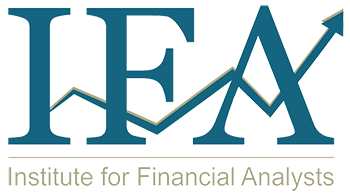Investors are keen on assessing how fund managers managing their money are performing on absolute terms and relative to other portfolios or funds. Several measures and techniques are used to evaluate the performance of portfolios, funds, and portfolio managers.
Among the most commonly used measures are:
Sharpe Ratio
The Sharpe ratio is defined as the portfolio’s risk premium divided by its risk:
Sharpe ratio= (Rp – Rf) / σp
The ratio uses the total risk of the portfolio, not its systematic risk. The use of total risk is appropriate if the portfolio is an investor’s total portfolio—that is, the investor does not own any other assets.
The higher the Sharpe ratio, the better the performance, provided the numerator is positive for all comparison portfolios.
The Sharpe ratio, however, suffers from two limitations. First, it uses total risk as a measure of risk when only systematic risk is priced. Second, the ratio is not informative by itself; it needs to be compared to the Sharpe ratio of other portfolios.
Treynor Ratio
The Treynor ratio is a simple extension of the Sharpe ratio and resolves the Sharpe ratio’s first limitation by substituting beta risk for total risk:
Treynor ratio = (Rp−Rf) / βp
Just like the Sharpe ratio, the numerators must be positive for the Treynor ratio to give meaningful results. In addition, the Treynor ratio does not work for negative-beta assets.
Jensen’s Alpha
Jensen’s alpha is based on systematic risk measured by beta. It is the difference between the actual portfolio return and the calculated risk-adjusted return. The risk-adjusted return of the portfolio is calculated using the beta of the portfolio and the CAPM.
Jensen’s alpha (αp) is given by:
αp = Rp – [Rf + βp(Rm – Rf)]
The returns in the equation are all realized, actual returns.
By definition, αm of the market is zero. If αp is positive (negative), then the portfolio has outperformed (underperformed) the market. Values of alpha can be used to rank different managers and the performance of their portfolios, as well as the magnitude of underperformance or overperformance.
Jensen’s alpha is the maximum amount that you should be willing to pay the manager to manage your money.
M2
M2 is an extension of the Sharpe ratio in that it is based on total risk, not beta risk. The idea behind the measure is to create a portfolio (P′) that mimics the risk of a market portfolio by altering the weights in Portfolio P and the risk-free asset until Portfolio P′ has the same total risk as the market. Because the risks of the mimicking portfolio and the market portfolio are the same, we can obtain the return on the mimicking portfolio and directly compare it with the market return. The weight in Portfolio P, wp, that makes the risks equal can be calculated as follows:
σp′= wp σp + (1−wp) * σRf= σm =wpσp, which gives wp= σmσp
Because the correlation between the market and the risk-free asset is zero, we get wp as the weight invested in Portfolio P and the balance invested in the risk-free asset. The risk-adjusted return for the mimicking portfolio is:
Rp′=wpRp + (1−wp) Rf = (σmσp) Rp + (1−σmσp) Rf = Rf + (σmσp) (Rp−Rf) =Rf + σm (Rp−Rfσp)
The return of the mimicking portfolio based on excess returns is (Rp−Rf)*σmσp .The difference in the return of the mimicking portfolio and the market return is M2, which can be expressed as a formula:
M2=(Rp−Rf)*σmσp−(Rm−Rf)
M2 gives us rankings that are identical to those of the Sharpe ratio. They are easier to interpret, however, because they are in percentage terms. A portfolio that matches the performance of the market will have an M2 of zero, whereas a portfolio that outperforms the market will have an M2 that is positive. By using M2, we are not only able to determine the rank of a portfolio but also which, if any, of our portfolios beat the market on a risk-adjusted basis.
A more comprehensive content for the concept will be available later.
We will include related examples and CFA questions that are also hyperlinked to the appropriate definitions.
